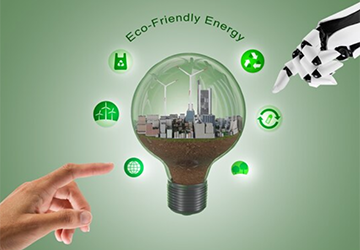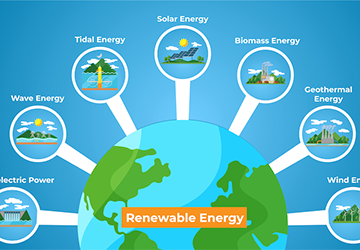Emerging Sustainable Tech Innovations Shaping a More Environmentally Friendly Future
In recent years, sustainable technology advances have become a focal point for addressing the planet's most pressing environmental challenges. These innovations reduce technology's environmental impact and promote a greener, more sustainable future. The green technology landscape rapidly evolves from renewable energy technologies to environmentally friendly engineering solutions, offering promising opportunities to mitigate climate change and promote environmental protection.

The Rise of Green Technology Innovation
The rise of green technology innovation reflects a growing awareness and commitment to sustainable development. These advances go beyond creating new devices to fundamentally change how we produce, consume, and dispose of technology. Sustainable technology advances span many areas, from energy production and consumption to waste management and resource conservation.
One of the most notable areas of progress in renewable energy technology is wind, hydro, and solar energy. Wind, hydro, and solar power are becoming increasingly efficient and cost-effective, making them viable alternatives to fossil fuels. For example, advances in photovoltaic cells have significantly increased the efficiency of solar panels, allowing them to convert more sunlight into electricity. Similarly, innovations in wind turbine design have improved their performance and reliability, even in low wind conditions.
Renewable Energy Technologies: Energy for the Future
Renewable energy technologies are at the heart of transitioning to a sustainable energy system. Solar and wind energy have made remarkable progress, driven by technological advances and economies of scale. Photovoltaic (PV) cell costs have dropped dramatically over the past decade, making solar energy more accessible to homes and businesses. Innovations such as bifacial solar panels (which capture sunlight from both sides) and solar tracking systems (which follow the sun's path) have further improved the efficiency and performance of solar systems.
Wind energy has also benefited from sustainable technological advances. Modern wind turbines are taller, have longer blades, and more efficient generators. Offshore wind farms are becoming more common, further increasing the capacity and reliability of wind energy.
Hydropower, one of the oldest renewable energy technologies, continues to evolve, using innovations to minimize its environmental impact. Small hydroelectric plants, often called micro-hydro plants, can provide sustainable energy solutions to remote communities without the need for large dams that damage ecosystems.
Environmentally Friendly Technology Solutions: Reducing Ecological Footprint
Beyond energy production, green engineering solutions transform industries from transportation to manufacturing. Electric vehicles (EVs) demonstrate how green technology innovations can reduce technology's environmental impact.
In manufacturing, sustainable technological advances lead to more efficient and less environmentally harmful production processes. 3D printing is one such innovation. It enables precise, on-demand production with minimal waste, significantly reducing the environmental impact of technology manufacturing. In addition, sustainable materials such as biodegradable plastics and recycled metals are becoming more common, contributing to developing a circular economy of resource reuse and recycling.
Waste management is another critical area where environmentally friendly technology solutions come into play. Intelligent waste management systems use sensors and IoT technology to optimize waste collection routes, reduce fuel consumption and increase recycling rates. In addition, advances in recycling technology enable the recovery of valuable materials from electronic waste, preventing harmful substances from contaminating the environment and reducing the need for new raw materials.
Impact of Technology on the Environment: Challenges and Opportunities
While advances in sustainable technology are promising, addressing technology's environmental impact is critical. Technology production, use, and disposal can have significant ecological consequences if not handled responsibly.
One major issue is electronic waste. Improper disposal can release toxic substances such as mercury or lead into the environment. To mitigate this problem, environmentally friendly engineering solutions are being developed to increase the recyclability of electronic products and promote the use of non-toxic materials in manufacturing.
Data centre energy consumption is another critical issue. The energy required to power these facilities has increased with data storage and cloud computing demands. To address this, sustainable technology advancements in data centre design focus on energy efficiency and renewable energy technologies. For example, some data centres are built in cold climates to take advantage of natural cooling. Others, however, are powered entirely by renewable energy sources such as solar and wind.

In addition, mining raw materials for technology products, such as rare earths, can have severe environmental and social impacts. Sustainable procurement practices and advances in materials science can reduce reliance on these critical materials and are essential to minimizing the environmental impact of technology.
The Future of Sustainable Technology
Looking ahead, the future of sustainable technology advancements holds tremendous potential. As technology evolves, it will be critical to integrate sustainability into every aspect of innovation. Numerous possibilities exist, from developing products that last longer and are easier to repair to developing new renewable energy technologies and environmentally friendly solutions.
One promising area is the development of smart grids, which use digital technology to manage and distribute electricity more efficiently. Smart grids can optimize energy consumption, reduce waste, and increase power resilience by integrating renewable energy, energy storage systems, and real-time data analytics.
The Internet of Things (IoT) has the potential to revolutionize energy management in homes and buildings. Smart thermostats, lighting systems, and home appliances can communicate with each other and adjust their operations to suit conditions in real time, significantly reducing energy consumption and carbon footprint.
Additionally, advances in biotechnology and nanotechnology are opening up new opportunities for green technology innovation. For example, bio-based and nanomaterials can provide sustainable alternatives to traditional plastics and metals, reducing the environmental impact of technology production and disposal.
Conclusion
The path to a sustainable future is both challenging and inspiring. Advances in sustainable technology play a vital role in this transition, providing innovative solutions to some of the most pressing environmental challenges of our time. From renewable energy technologies that power our lives to green technology solutions that reduce waste and pollution, the impact of these innovations is far-reaching.
However, it is essential to remain vigilant and proactive when addressing technology's environmental impact. As we continue to innovate, sustainability must be at the forefront of technological development. By using environmentally friendly technologies and committing to responsible behaviour, a harmonious coexistence of future technology and the environment is possible, ensuring a healthier planet for future generations.
Related Posts
- 10 Cutting-Edge Technology Breakthroughs You Need to Know About Now!
- 5 Simple Fixes for Common Email Problems
- 5 Blockchain Applications Transforming the Financial Sector
- 10 Must-Have Smart Home Devices for 2024
- 5 Troubleshooting Tips for Unresponsive Apps on Your Phone
- 5 Solutions for Video Streaming Issues on Various Devices